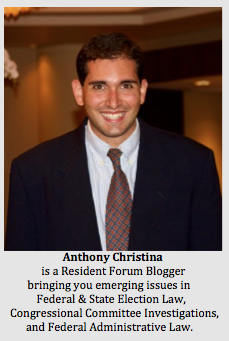Cleveland and Philadelphia—two resurgent American cities from rustbelt swing states—will play host to the Republican and Democratic National Conventions in the summer of 2016. Political party nominating conventions signal the end of the grueling internal primary process and the start of the unified general election season. In a pre-Citizen’s United v. FEC, and pre-Bipartisan Campaign Reform Act of 2002 world where political parties (in all their ‘soft money’ preeminence) reigned supreme, national political party nominating conventions used to be highly contentious, eccentric campaign-button wearing, and brokered affairs in which a party’s differing ideological and political factions “duked” it out in “smoke filled back rooms” and on the nominating floor. “The presidential nominating process, the weakest part of our political system, is also the one part that was not envisioned by the Founding Fathers.”
Today’s modern quadrennial conventions have been relegated to what amounts to a five day pep rally. The actual legal business of the convention—voting on the party’s official platform and the official nomination and approval for President and Vice President—typically happens in breakout rooms or on the floor at hours not televised in primetime.
Not since 1976 for Republicans and 1980 for Democrats has the notion or even the prospect of a contentious nomination been a possibility. While Hillary Clinton certainly gave Barack Obama a competitive run for his money in the 2008 primaries, and Rick Santorum’s, Newt Gingrich’s and Ron Paul’s wins (in a handful of early states prolonged the 2012 Republican primaries longer than what Mitt Romney would have liked, the results from both primary cycles beg the question—given the right set of circumstances, can there still be a contentious, brokered convention?
In the current political environment where the emergence of Donald Trump as a serious contender has totally changed the game, could party conventions hold the keys to the White House? Specifically, do current national party bylaws regarding the proper seating of delegates, allow for a candidate to competitively take a presidential nomination to a floor battle?
The rules and bylaws of the Republican National Committee and the Democratic National Committeedetermine the total amount of delegates that will be permitted to vote at the respective nominating conventions. Once the amount of delegates has been set by the political parties, delegates are then selected at the state level. The delegate system is a quasi-hybrid relationship between state law and state political party bylaws. State legislatures set the dates and methods for each contest. State political parties determine the mode for the selection of delegates. At the highest level, most states follow either a caucus or primary system. Some state parties combine the two to select delegates. According to a Congressional Research Service report on conventions:
A caucus is a local meeting, usually at the precinct level, where participants register their presidential candidate preference in a public way by joining a group of supporters for that candidate.
From there primaries are broken down further into either a preference primary or a direct election primary. The CRS further delineates:
A preference primary simply allows a voter to mark his or her ballot for a presidential candidate or uncommitted preference. A direct election primary includes a presidential preference vote and instructs the voter to mark the ballot for a certain number of delegates (and alternates, possibly) pledged to a presidential candidate. In a preference primary that uses winner-take-all rules, the presidential candidate with the highest vote total statewide wins the at-large delegates, and the winner in each congressional district is awarded the congressional district delegates. In a direct primary election, the delegates may be awarded on a proportional basis, according to the vote for presidential candidates, and elected within each presidential candidate preference according to their own individual vote totals.
The third (albeit antiquated) method used to select delegates is the convention method. In the convention method, locally (often pre-pledged) elected individuals gather at the state party nominating convention and vote to choose who their state’s delegates will be. Typically, western and southern states employ the convention method.
While we are still two months out from the Iowa Caucuses and the New Hampshire Primary, no one could have predicted the rise of Bernie Sanders and Donald Trump and their staying power. But will their popularity translate into a regional ground game that can turn out voters, and more importantly, get delegates in their camp?
The extension of the primary season calendar, the rise of independent Super PACs propping up candidates, and the political maneuvering of party bylaws and rules have effectively made a brokered convention nearly impossible. Even candidates who have secured a substantial but less than a majority amount of delegates face impenetrable rules at a convention, making it impracticable to get themselves put forth into nomination. This is the way the process, designed by party leaders at the RNC and DNC, has been engineered to play out. Watching a dark horse candidate arise out of a brokered convention would be epic, but the probability of that occurring in the foreseeable future is low. Nevertheless, as they say in politics—anything can happen.
Published December 28, 2015
